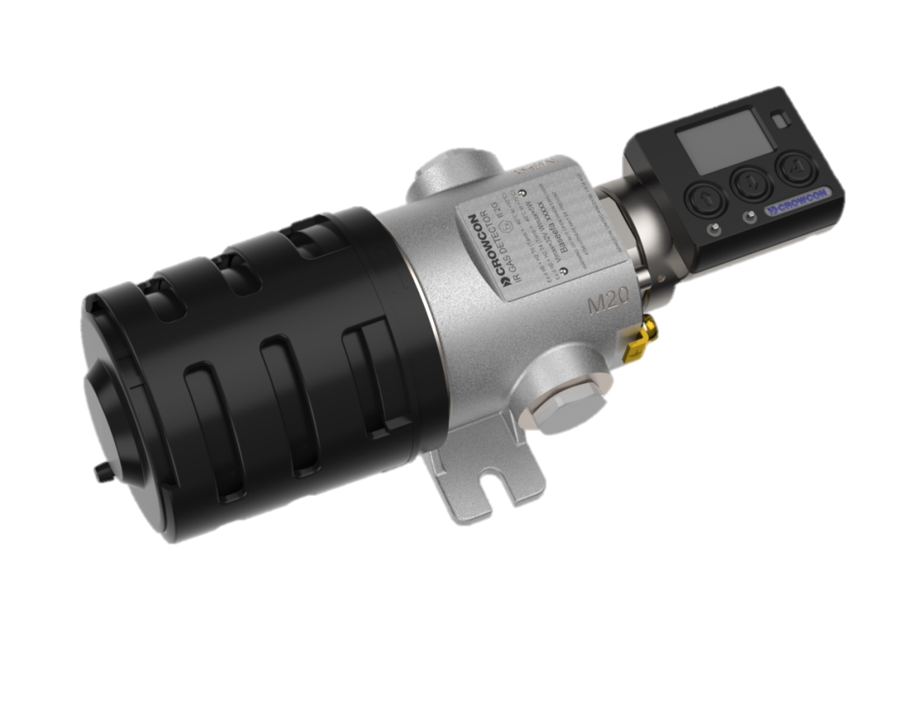Come funzionano i sensori PID
I sensori PID funzionano utilizzando la luce ultravioletta per ionizzare le molecole di gas. Questi sensori contengono una lampada UV che emette luce per scomporre i COV in ioni, producendo una corrente proporzionale alla concentrazione del gas. Comunemente utilizzati in contesti quali la sicurezza industriale, il monitoraggio ambientale e la manipolazione di materiali pericolosi, i sensori PID svolgono un ruolo cruciale nel garantire la sicurezza dei lavoratori e nel prevenire i rischi per la salute in ambienti contaminati.
- Precisione
I sensori PID offrono un'elevata precisione nel rilevamento dei COV, rendendoli una scelta affidabile per i settori in cui le fughe di gas o le emissioni di COV rappresentano un serio rischio. Misurano concentrazioni in parti per milione (ppm) o anche inferiori. Tuttavia, fattori ambientali come l'umidità, la sporcizia e la presenza di gas interferenti possono influire sulla loro precisione. Per garantire l'accuratezza sono necessarie calibrazioni e manutenzioni regolari; i produttori raccomandano in genere di ricalibrare i sensori in base all'uso e alle condizioni ambientali. Nonostante le potenziali vulnerabilità, i sensori PID rimangono affidabili per i loro tempi di risposta rapidi e la capacità di rilevare concentrazioni di gas a basso livello.
- Affidabilità
I rivelatori a fotoionizzazione sono generalmente affidabili, ma le loro prestazioni possono essere influenzate dalla contaminazione dello stack di elettrodi e dal degrado della lampada UV. I sensori contaminati possono continuare a funzionare, ma perdono sensibilità nel rilevare i COV. Sebbene la durata della lampada di un sensore PID possa durare fino a 5.000 ore, le sue prestazioni possono degradarsi in ambienti sporchi o fortemente contaminati, il che rende essenziale una pulizia regolare e una gestione adeguata per prolungarne la vita operativa.
- Manutenzione
La manutenzione dei sensori PID prevede la pulizia regolare della lampada UV e della pila di elettrodi, nonché la ricalibrazione. La frequenza della manutenzione dipende dall'ambiente in cui il sensore viene utilizzato. In ambienti puliti può essere sufficiente una calibrazione mensile, mentre in ambienti contaminati sono necessari controlli più frequenti. La sostituzione della pila di elettrodi e la pulizia della lampada sono fondamentali per garantire il funzionamento accurato del sensore. I sensori PID potrebbero dover essere sostituiti prima in ambienti con elevate concentrazioni di COV o contaminazione da particolato. Un bump test e una calibrazione regolari possono identificare i sensori difettosi prima che rappresentino un rischio per la sicurezza.
Limitazioni dei sensori PID
- Sensibile all'umidità e agli ambienti sporchi
- La pila di elettrodi ha una durata limitata, soprattutto nei siti contaminati.
- Richiede una manutenzione regolare per garantire il corretto funzionamento
- Il degrado della lampada nel tempo riduce la sensibilità
- L'interferenza di alcuni gas può influire sulla precisione
Applicazioni dei sensori PID
Esplora i prodotti correlati
Iscriviti per ricevere gli ultimi approfondimenti di
nella tua casella di posta elettronica
Leggi le informazioni su Crowcon Privacy e Politica sui cookie qui. Se cambiate idea, potete annullare l'iscrizione in qualsiasi momento.



